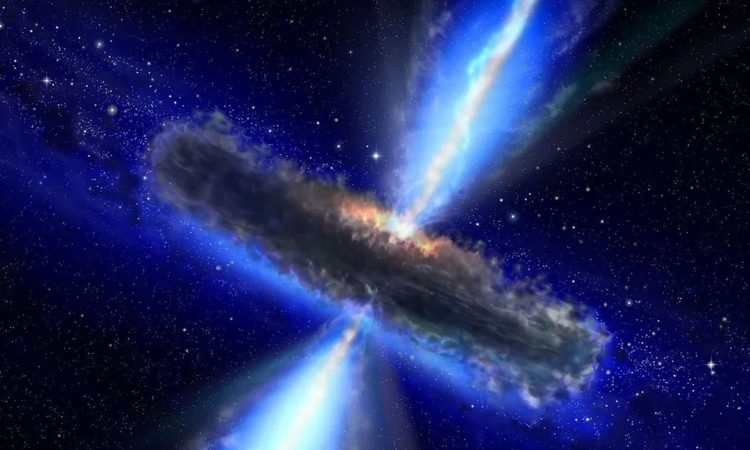
A new study suggests that black holes may not be the featureless, structureless entities that Einstein’s theory of general relativity predicts. Instead, these “cosmic monsters” could be bizarre quantum objects known as “frozen stars.” What is the paradox of black hole radiation?
Although they would share some similarities with black holes, the hypothetical celestial bodies differ in key ways, which Hawking’s (named after the physicist Stephen Hawking) could solve. This paradox arises because the radiation theoretically emitted by the event horizon of a black hole does not appear to contain information about the matter that formed the black hole, thus violating the fundamental principle of quantum mechanics that information cannot be destroyed.
Furthermore, unlike conventional black holes, frozen stars are not expected to contain a singularity (a point of infinite density at the center), which resolves another contradiction between the classical model of black holes and the general rule in physics that infinities they cannot exist in nature. The occurrence of infinities in a theory usually indicates the limitations of that theory, .
The paradox of black hole radiation, one step closer to being solved
“Icy stars are a type of black hole mimic: ultra-compact astrophysical objects that lack singularities and a horizon, but can mimic all the observable properties of black holes. If they exist, it would indicate the need to significantly and fundamentally modify the theory of general relativity,” said Ramy Brustein, professor of physics at Ben-Gurion University (Israel).
Brustein is the lead author of a study describing the icy star theory, published in .
The classical model of black holes, first described by Karl Schwarzschild in 1916, portrays black holes as having two essential features: a singularity where all mass is concentrated, and an event horizon, a limit beyond which nothing, not even light, can can escape
Why might general relativity be wrong about black holes?
However, this model runs into a serious problem when quantum mechanics is introduced. In the 1970s, he discovered that quantum effects near the event horizon should lead to the creation of particles from the vacuum of space, a process known as Hawking radiation. This radiation would cause the black hole to gradually lose mass and eventually evaporate completely.
The paradox of black hole radiation arises because this radiation does not appear to carry information about the matter that originally formed the black hole. If the black hole evaporates completely, this information appears to be lost forever, which goes against the principles of quantum mechanics, which dictate that information must be conserved. This contradiction is known as the information loss paradox, one of the biggest challenges in theoretical physics.
What are frozen stars?
In their new study, Brustein and his co-authors, AJM Medved of Rhodes University (South Africa) and Tamar Simhon of Ben-Gurion University, performed a detailed theoretical analysis of the frozen star model and found that it solves the paradoxes of the traditional model because it does not imply a horizon or a singularity.
The authors found that if black holes are in fact very compact objects composed of ultra-rigid matter, whose properties are inspired by string theory (the leading candidate for quantum gravity theory), they do not collapse into points of infinite density and have a size slightly higher than the conventional event horizon, preventing its formation.
“We showed how icy stars behave as almost perfect absorbers, even though they don’t have a horizon, and act as a source of gravitational waves,” Brustein said, noting that these objects can absorb almost everything that falls on them, as well like black holes. “Furthermore, they generate the same external geometry as the conventional model of black holes and reproduce their thermodynamic properties,” the researcher continues.
Are frozen stars the answer to the black hole radiation paradox?
The frozen star model offers a potential solution to the paradoxes associated with traditional black holes, but scientists need to test it experimentally.
Unlike conventional black holes, frozen stars are expected to have an internal structure, albeit one with bizarre properties dictated by quantum gravity. This paves the way for observational discrimination between the two patterns. Evidence could be present in gravitational waves (fluctuations in the structure of space-time) generated during black hole mergers. “This is where the differences would be most obvious,” Brustein explained.
The team is still working on understanding the internal structure of frozen stars and how they would differ from other extreme cosmic objects such as neutron stars, but it’s an achievable goal, Brustein said. From there, they could analyze data from existing and future gravitational-wave observatories, since the waves emitted during mergers are extremely powerful and can carry information about the structure of these ultracompact objects.
“Discovering any prediction of the model of frozen stars will have a revolutionary impact,” Brustein concluded.

